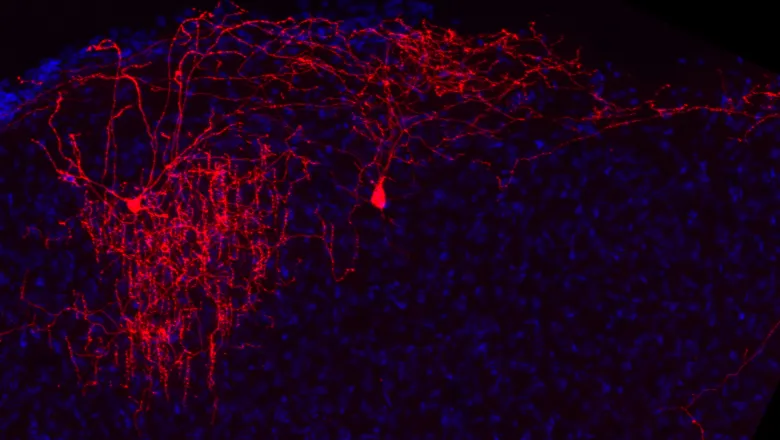We have identified the subclasses of interneurons that integrate and regulate a key stage in brain development. These interneurons, SST+ and PV+ interneurons, have also been associated with several neurodevelopmental conditions. These findings indicate that we need to further look at these interneurons to better understand these conditions.”
Professor Oscar Marín FMedSci FRS, Professor of Neuroscience and the senior author of this study
10 April 2024
Researchers identify neurons responsible for key activity transition in brain development
SST+ and PV+ interneurons are responsible for the transition between early and adult patterns of neuronal activity in the cerebral cortex. This process allows the brain to acquire essential sensory and cognitive functions after birth.

Scientists at the Centre for Developmental Neurobiology and MRC Centre for Neurodevelopmental Disorders published a study in Neuron that identified two types of interneurons, the inhibitory neurons of the brain, as instructors of a key developmental process in the brain.
During early development after birth, brain networks are characterised by bursts of activity that synchronise a large number of neurons. As the brain matures, this activity pattern changes in rhythm, frequency, and amplitude to become asynchronous, where only a small population of neurons are simultaneously active. These changes allow the brain to process and adapt to the vast information our senses receive.
Although this transition between patterns of neuronal activity is a crucial milestone in brain development, the cellular mechanisms behind this process remain poorly understood. In this study, the laboratory led by Oscar Marín sought to investigate the key players behind this transition.
The scientists observe that increased inhibitory signals cause this transition. While excitatory and inhibitory signals shape the early developing brain, the inhibitory signals appear later than the excitatory ones. The progressive maturation of interneurons, the cells that generate these inhibitory signals, dictates the development of brain function.
The cerebral cortex contains a large diversity of interneurons. In this study, they identified the specific interneurons responsible for the modulation of network activity in the mice's first two weeks of postnatal development. SST+ interneurons generate synchronous patterns of neuronal activity, whereas PV+ interneurons are responsible for the transition to an asynchronous pattern of activity.
They also found that SST+ interneurons partly control the maturation of PV+ interneurons and thus instruct the timing of this transition. Additionally, preventing SST+ interneurons from carrying out their action leads to a delay in brain development. These results confirm SST+ interneurons’ role as critical regulators of neuronal dynamics in the developing brain.
Somatostatin interneurons control the timing of developmental desynchronization in cortical networks was published in Neuron.
For more information, please contact Annora Thoeng (School of Neuroscience Communications Manager)

